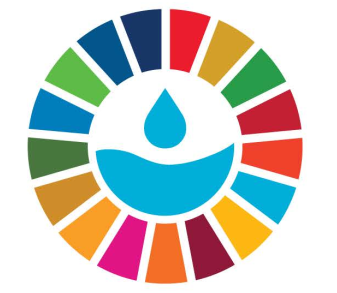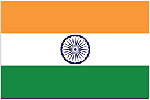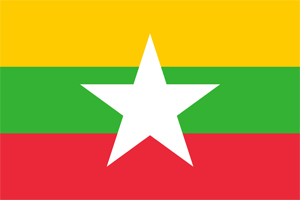Demonstrating sustainability in water-related infrastructure: Increase the number of hydropower projects certified against the Hydropower Sustainability Standard to 50 before 2025
Hydropower Sustainability Council
(
Non-governmental organization (NGO)
)
#SDGAction51503
Description
Over the last twenty years, our team has been working with its partners – including IHA, TNC, WWF, the Equator Principles, the World Bank, SECO, Norad and other governments – to develop a suite of assessments tools to assess the sustainability of hydropower projects. Most recently, our tools were developed into the first global sustainability standard for hydropower. Our Standard was officially launched in September 2021. It is governed by a multi-stakeholder Council made up of representatives of social, community and environmental organisations, governments, commercial and development banks and the hydropower sector. This inclusive approach to governance ensures that all stakeholder voices are heard in the shaping of the use of the tools. It is linked to the issuance of green bonds by the Climate Bonds Initiative and the certification of renewable energy provision through RE 100 group.
The Hydropower Sustainability (HS) Certification Scheme is the driving mechanism to make sustainable water-infrastructure management, especially for hydropower, the norm. The scheme incentives and recognises hydropower projects for their environmental, social and governance (ESG) performance, helping to set minimum performance expectations for the sector and publicly acknowledging and rewarding projects for meeting these expectations. It considers transboundary issues, Indigenous Peoples rights, biodiversity challenges and integrated water resource management.
Using a rating system, the Standard certifies high-performing hydropower projects at any stage of preparation, development and operation worldwide, and supports developers and operators to benchmark against internationally recognised levels of good and best practices.
Over the last ten years, our team has focused on building capacity where needed the most through numerous donor-funded capacity-building programmes. Examples include collaborations with the World Bank in the Zambezi Basin and Nepal; the Swiss State Secretariat for Economic Affairs (SECO) in Ghana, Indonesia, Colombia, Albania and the Western Balkans, Tajikistan and Central Asia; Agence française de développement (AFD) and African Development Bank (AfDB) in Francophone African countries; and the Norwegian Agency for Development Cooperation (Norad) in Myanmar, Nepal and Mozambique.
Hydropower projects and other water-related infrastructure provide an interface between society and environment. They can protect humans from natural hazards, such as droughts or floods. They also allow people to benefit from what nature offers – renewable and clean electricity that drives socio-economic development and enables wind and solar power with storage services. But such projects inevitably influence the environment, by either harming or improving existing conditions.
This is a global challenge and is widely covered in the SDGs, most notably in SDGs 6, 7 and 13. Today, there is a huge opportunity to improve existing infrastructure and help develop new climate-aligned projects, but ESG concerns are affecting current production and new developments. Governments in developing countries have highlighted the need for support to improve hydropower practices, especially due to the rising challenges caused by climate change in their countries.
Many developing countries have constraints, particularly related to institutional capacity on ESG issues, that limit the potential for hydropower assets to deliver sustainable benefits locally and regionally. The limited scope of local training provision, the lack of a structured framework to guide project development, and insufficient awareness of good practice are some examples of these constraints.
Through application of the Hydropower Sustainability Standard and by increasing the number of certified hydropower projects, more sustainable water-related infrastructure, most notably hydropower projects, will be planned and developed thanks to strengthened institutional capacity, and opportunities will be increased for climate finance investments in developing countries.
Link to a published assessment of a certified project: https://www.hydrosustainability.org/published-assessments/sebzor
This project earned a Silver certification against the Hydropower Sustainability Standard in March 2023.
SDGS & Targets
Goal 6
Ensure availability and sustainable management of water and sanitation for all
6.1
By 2030, achieve universal and equitable access to safe and affordable drinking water for all
6.1.1
Proportion of population using safely managed drinking water services
6.2
By 2030, achieve access to adequate and equitable sanitation and hygiene for all and end open defecation, paying special attention to the needs of women and girls and those in vulnerable situations
6.2.1
Proportion of population using (a) safely managed sanitation services and (b) a hand-washing facility with soap and water
6.3
By 2030, improve water quality by reducing pollution, eliminating dumping and minimizing release of hazardous chemicals and materials, halving the proportion of untreated wastewater and substantially increasing recycling and safe reuse globally
6.3.1
Proportion of domestic and industrial wastewater flows safely treated
6.3.2
Proportion of bodies of water with good ambient water quality
6.4
6.4.1
Change in water-use efficiency over time
6.4.2
Level of water stress: freshwater withdrawal as a proportion of available freshwater resources
6.5
By 2030, implement integrated water resources management at all levels, including through transboundary cooperation as appropriate
6.5.1
Degree of integrated water resources management
6.5.2
Proportion of transboundary basin area with an operational arrangement for water cooperation
6.6
6.6.1
Change in the extent of water-related ecosystems over time
6.a
6.a.1
Amount of water- and sanitation-related official development assistance that is part of a government-coordinated spending plan
6.b
Support and strengthen the participation of local communities in improving water and sanitation management
6.b.1
Proportion of local administrative units with established and operational policies and procedures for participation of local communities in water and sanitation management
Goal 7
Ensure access to affordable, reliable, sustainable and modern energy for all
7.1
By 2030, ensure universal access to affordable, reliable and modern energy services
7.1.1
Proportion of population with access to electricity
7.1.2
Proportion of population with primary reliance on clean fuels and technology
7.2
7.2.1
Renewable energy share in the total final energy consumption
7.3
7.3.1
Energy intensity measured in terms of primary energy and GDP
7.a
7.a.1
International financial flows to developing countries in support of clean energy research and development and renewable energy production, including in hybrid systems
7.b
By 2030, expand infrastructure and upgrade technology for supplying modern and sustainable energy services for all in developing countries, in particular least developed countries, small island developing States, and land-locked developing countries, in accordance with their respective programmes of support
7.b.1
Installed renewable energy-generating capacity in developing and developed countries (in watts per capita)
Goal 13
Take urgent action to combat climate change and its impacts
13.1
Strengthen resilience and adaptive capacity to climate-related hazards and natural disasters in all countries
13.1.1
Number of deaths, missing persons and directly affected persons attributed to disasters per 100,000 population
13.1.2
Number of countries that adopt and implement national disaster risk reduction strategies in line with the Sendai Framework for Disaster Risk Reduction 2015–2030
13.1.3
Proportion of local governments that adopt and implement local disaster risk reduction strategies in line with national disaster risk reduction strategies
13.2
Integrate climate change measures into national policies, strategies and planning
13.2.1
Number of countries with nationally determined contributions, long-term strategies, national adaptation plans and adaptation communications, as reported to the secretariat of the United Nations Framework Convention on Climate Change
13.2.2
Total greenhouse gas emissions per year
13.3
Improve education, awareness-raising and human and institutional capacity on climate change mitigation, adaptation, impact reduction and early warning
13.3.1
Extent to which (i) global citizenship education and (ii) education for sustainable development are mainstreamed in (a) national education policies; (b) curricula; (c) teacher education; and (d) student assessment
13.a
Implement the commitment undertaken by developed-country parties to the United Nations Framework Convention on Climate Change to a goal of mobilizing jointly $100 billion annually by 2020 from all sources to address the needs of developing countries in the context of meaningful mitigation actions and transparency on implementation and fully operationalize the Green Climate Fund through its capitalization as soon as possible
13.a.1
Amounts provided and mobilized in United States dollars per year in relation to the continued existing collective mobilization goal of the $100 billion commitment through to 2025
13.b
Promote mechanisms for raising capacity for effective climate change-related planning and management in least developed countries and small island developing States, including focusing on women, youth and local and marginalized communities
13.b.1
Number of least developed countries and small island developing States with nationally determined contributions, long-term strategies, national adaptation plans and adaptation communications, as reported to the secretariat of the United Nations Framework Convention on Climate Change
SDG 14 targets covered
| Name | Description |
|---|
Deliverables & Timeline
Resources mobilized
Partnership Progress
Feedback
Action Network

Timeline
Entity
Region
- Global
Other beneficiaries
Hydropower developers and operators.
Governments and regulatory agencies.
Local communities.
Financial institutions, investors, and insurers.
Environmental and social NGOs.
Industry associations and trade groups.
Academic institutions and researchers.
Multi-stakeholder partnerships and initiatives.
International development organizations and aid agencies.
Independent auditors and verifiers.
More information
Countries








Contact Information
Mariana, Sustainability Engagement Officer

